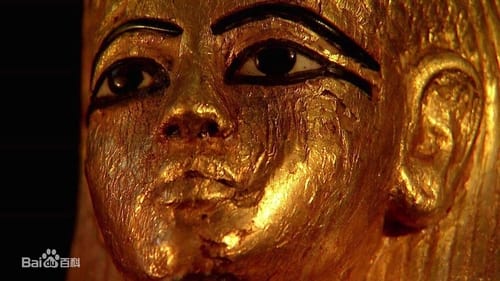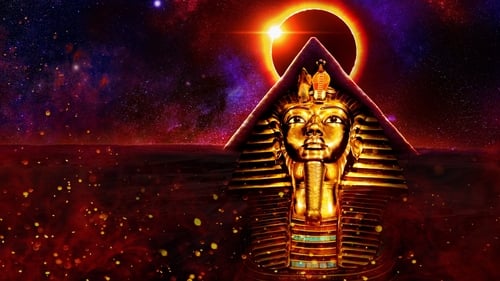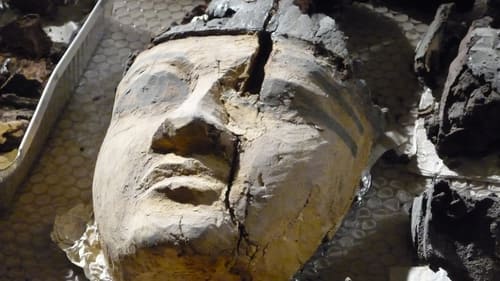Zahi Hawass
Nacimiento : 1947-05-28, Damietta, Egypt
Historia
Zahi Hawass (Arabic: زاهي حواس; born May 28, 1947) is an Egyptian archaeologist, an Egyptologist, and former Minister of State for Antiquities Affairs. He has also worked at archaeological sites in the Nile Delta, the Western Desert, and the Upper Nile Valley.
Hawass has received widespread publicity internationally, and was the subject of a reality television series in the United States, Chasing Mummies. His views and links to business ventures and the Mubarak regime have engendered controversy. In connection with the awarding of a gift shop contract at the Egyptian Museum and alleged smuggling of antiquities, he was sentenced to a prison term, which was later lifted.

Historia de personalidades Dominicanas sobresalientes en Estados Unidos, Canada, España, Colombia y Egipto

Self
En las arenas de Saqqara, dos de los egiptólogos más famosos del mundo, el Dr. Zahi Hawass y su protegido y rival, el Dr. Mostafa Waziri, compiten contrarreloj con sus equipos para ver quién hace el mayor descubrimiento.

Self
With over 60 tombs, the Valley of the Kings is the most-famous burial ground on Earth. In the biggest Egyptian excavation ever, a team of archaeologists led by Zahi Hawass heads into the Western Valley to hunt for evidence of an undiscovered tomb.

Self - Friend
Varias películas épicas de alto presupuesto convirtieron a Omar Sharif (1932-2015) en una estrella de cine. Era un actor, pero también un jugador de bridge, un mujeriego, un vividor; era un hombre lleno de contradicciones, que disfrutaba más de los juegos de cartas que de las películas; era un eterno nómada que pasó la mitad de su vida en un hotel.

Self - Supreme Council of Antiquities
For 45 centuries, the Great Sphinx has cast its enigmatic gaze over Egypt's Giza Plateau. The biggest and oldest statue in a land of colossal ancient monuments, its scale is staggering: The mighty head towers as tall as the White House, while its body is nearly the length of a football field. This strange half-human, half-lion image has inspired countless fantastic theories about its origins. How was it built, and who or what does it represent? Surprisingly, the scribes of the period when it was built—during Egypt's Old Kingdom—passed over it in silence. Adding to the mystery, archeologists found that its creators abruptly discarded their tools and abandoned the Sphinx when it was nearly complete. Searching for clues, NOVA's expert team of archeologists, including Mark Lehner, director of Ancient Egypt Research Associates, carries out eye-opening experiments.

Self
En El Cairo, un equipo de arqueólogos descubre las ruinas de una estructura gigantesca y a medida que se van adentrando descubren que podría ser la cuarta pirámide perdida de Giza. Una construcción de leyenda con más de cinco mil años levantada contrarreloj.

Self - Host
Durante los últimos 200 años, los arqueólogos han hecho unos descubrimientos asombrosos que han cautivado al mundo entero y han redefinido nuestra concepción del antiguo Egipto. Pero de todos estos miles de descubrimientos, ¿cuál ha sido el más importante? El Dr. Zahi Hawass, Secretario General del Consejo Supremo de Antigüedades de Egipto (SCA) se basa en su dilatada experiencia para conformar esta lista de los diez descubrimientos arqueológicos más importantes del país: desde el descubrimiento del inmenso complejo de dos templos de Ramsés II en Abu Simbel a principios del siglo XIX, al hallazgo de la tumba de Tutankhamón por parte de Howard Carter o al reciente descubrimiento del Valle de las momias de oro. Estos son los hallazgos que han transformado nuestra concepción del antiguo Egipto y que aún hoy en día nos siguen descubriendo nuevas claves para entender la magnitud de esta civilización.

Self
Revolucionaron el Antiguo Egipto hace más de 3.000 años. Nefertiti, “la belleza ha llegado” y su marido, el faraón Akenatón, removieron los fundamentos de la antigua sociedad egipcia y reinventaron toda una civilización. Se deshicieron del antiguo gobierno, la religión y la capital, e incluso sustituyeron a los antiguos dioses. Y, tras la convulsión, desaparecieron junto a toda su familia. ¿Qué sucedió realmente? Hace décadas que el debate sigue abierto. National Geographic se adentra en el Valle de los Reyes mediante las tecnologías más avanzadas y el uso de tomografías computarizadas para proseguir la búsqueda de aquella familia real rodeada de misterio. Una familia especialmente célebre gracias a un niño, con toda posibilidad hijo de Akenatón, que llegaría a gobernar Egipto: el faraón Tutankamón.

Himself (as Dr. Zahi Hawass)
American archeologists have found a new tomb in the desert valley. This is the first find of this magnitude since King Tutankhamun's tomb was uncovered in 1922, according to Egypt's Supreme Council of Antiquities. Called KV 63 - it is the 63rd discovered since the valley was first mapped - the new, intact tomb was found just 16 feet away from King Tut's resting place. A team of archeologists led by Otto Schaden discovered the tomb by accident while conducting "routine digs" on the nearby tomb of King Amenmesses, a 19th Dynasty pharaoh. Explore the wonders of the magnificent lost era.

Self
Twenty-five hundred years before the reign of Julius Caesar, the ancient Egyptians were deftly harnessing the power of engineering on an unprecedented scale. Egyptian temples, fortresses, pyramids and palaces forever redefined the limits of architectural possibility. They also served as a warning to all of Egypt's enemies-that the world's most advanced civilization could accomplish anything. This two-hour special uses cinematic recreations and cutting-edge CGI to profile the greatest engineering achievements of ancient Egypt, and the pharaohs and architects who were behind them. Includes Djoser's Step Pyramid at Saqqara, Senusret's Nubian Superfortresses, Hatshepsut's Mortuary Temple at Dier el-Bahari, Akhenaten's city at Amarna, and the temples of Ramesses the Great at Abu Simbel.

Himself / Egyptologist
As part of a high-tech forensic probe into the demise of Egyptian Pharaoh Tutankhamun, scientists use X-rays and CT scans as they attempt to reach a conclusion about just how this famed king died. In addition, they explore the mysterious curse on explorers linked to Tut's tomb excavation.

Pharaoh's Revenge: Egypt's Lost Treasure cuenta la historia de la momia de Ramsés I en su regreso, 150 años después, a Luxor en 2003. Ramsés I, el fundador de la 19ª dinastía de Egipto, gobernó desde 1293 hasta 1291 a.C. Pero su momia fue sacada de Egipto para exhibirla en un museo canadiense en la década de 1850, cortesía de los ladrones de tumbas que la vendieron al exilio. Ahora, con la ayuda de un museo en Atlanta, la reliquia egipcia regresa a casa a un lugar reservado especialmente para la momia y desata historias de los viajes de un faraón.

Himself
Maury Povich hosts this exploration of Egypt's pyramid of Khamerernebty II and the unopened Tomb of the Unknown by Dr. Zahi A. Hawass, Undersecretary of State for Egypt's Giza Plateau. Also: an examination of the mummy Nefer in Saqqara.

Maga
Hace 4.500 años las arenas del desierto egipcio fueron testigo de una de las proezas más asombrosas de las historia de la humanidad: la construcción de las pirámides Keops, Kefren y Micerino, gigantescos templos funerarios en la meseta de Gizeh, levantados en honor de aquellos faraones. National Geografhic y un equipo de arqueólogos han explorado algunos de los secretos mejor guardados de aquel periodo, como el procedimiento que se seguía para erigir semejantes monumentos en aquella época o el método empleado por los embalsamadores para momificar los cuerpos. Las cámaras le conducirán también al recinto en que se descubrió la misteriosa embarcación del faraón Keops, el suntuoso navío que debía conducirlo a la eternidad.

Self - Egyptologist
El Dr. Zahi Hawass ha descubierto una ciudad dorada perdida que guarda los secretos de los últimos días del rey Tutankamón y la Edad de Oro de Egipto.







